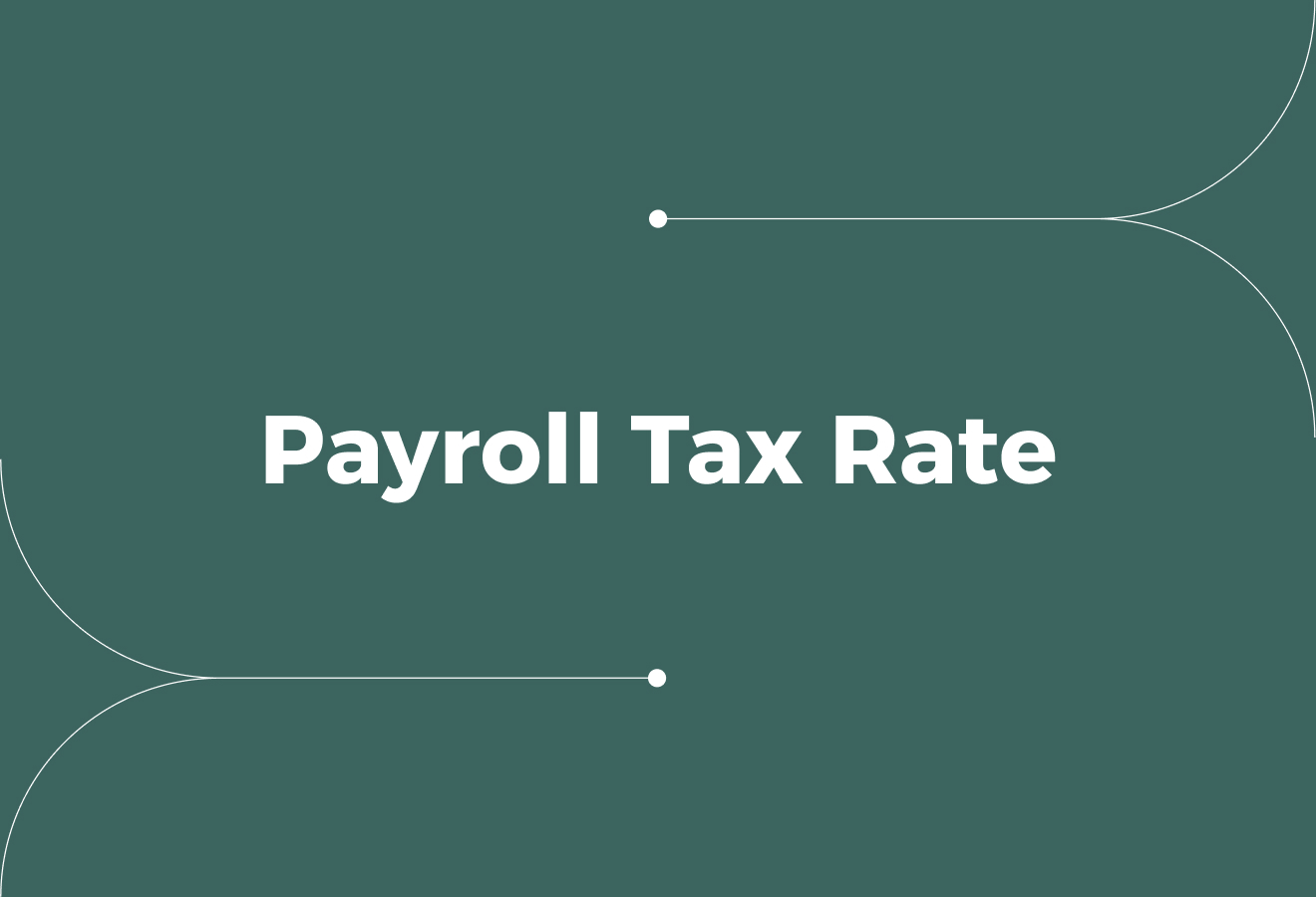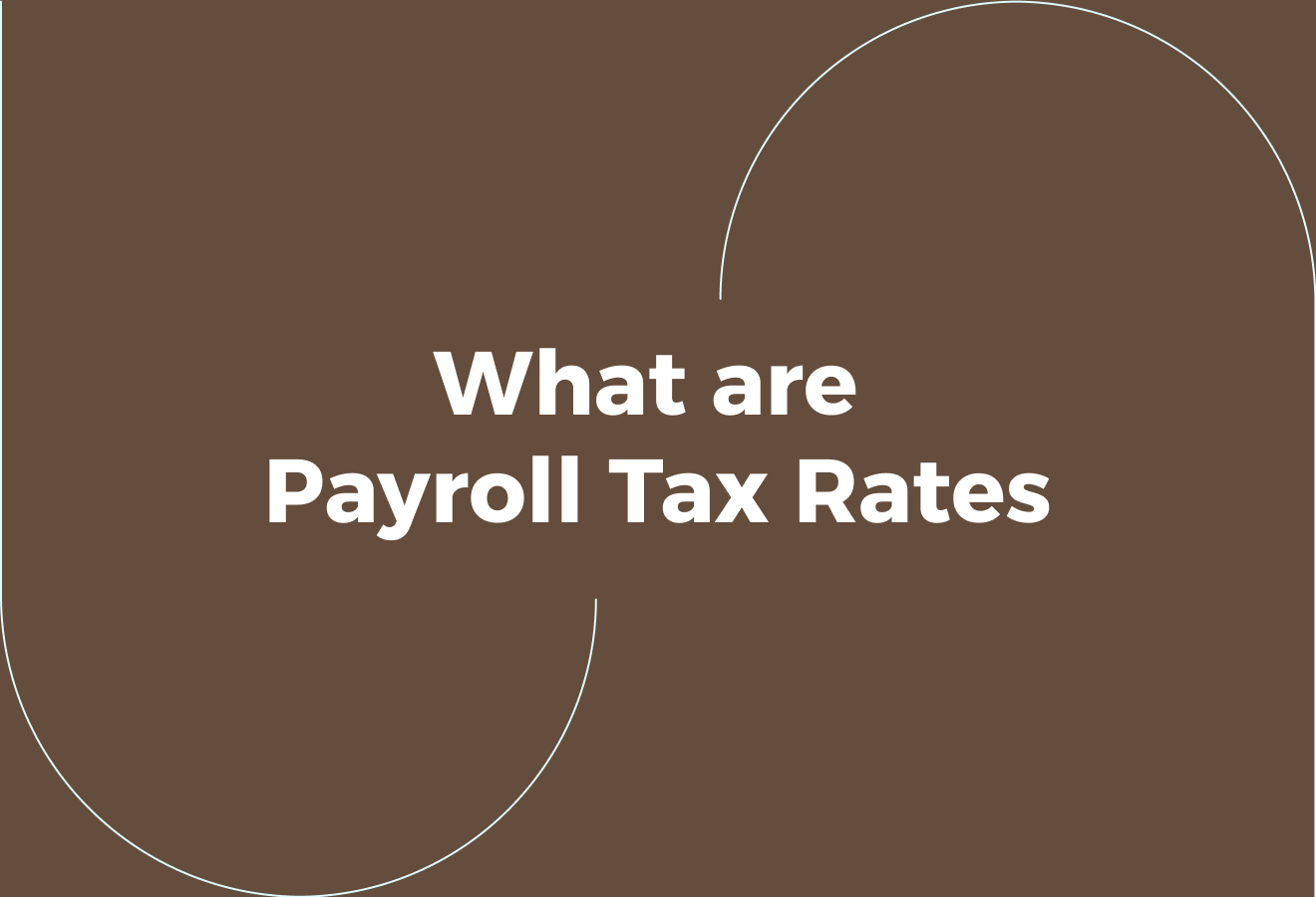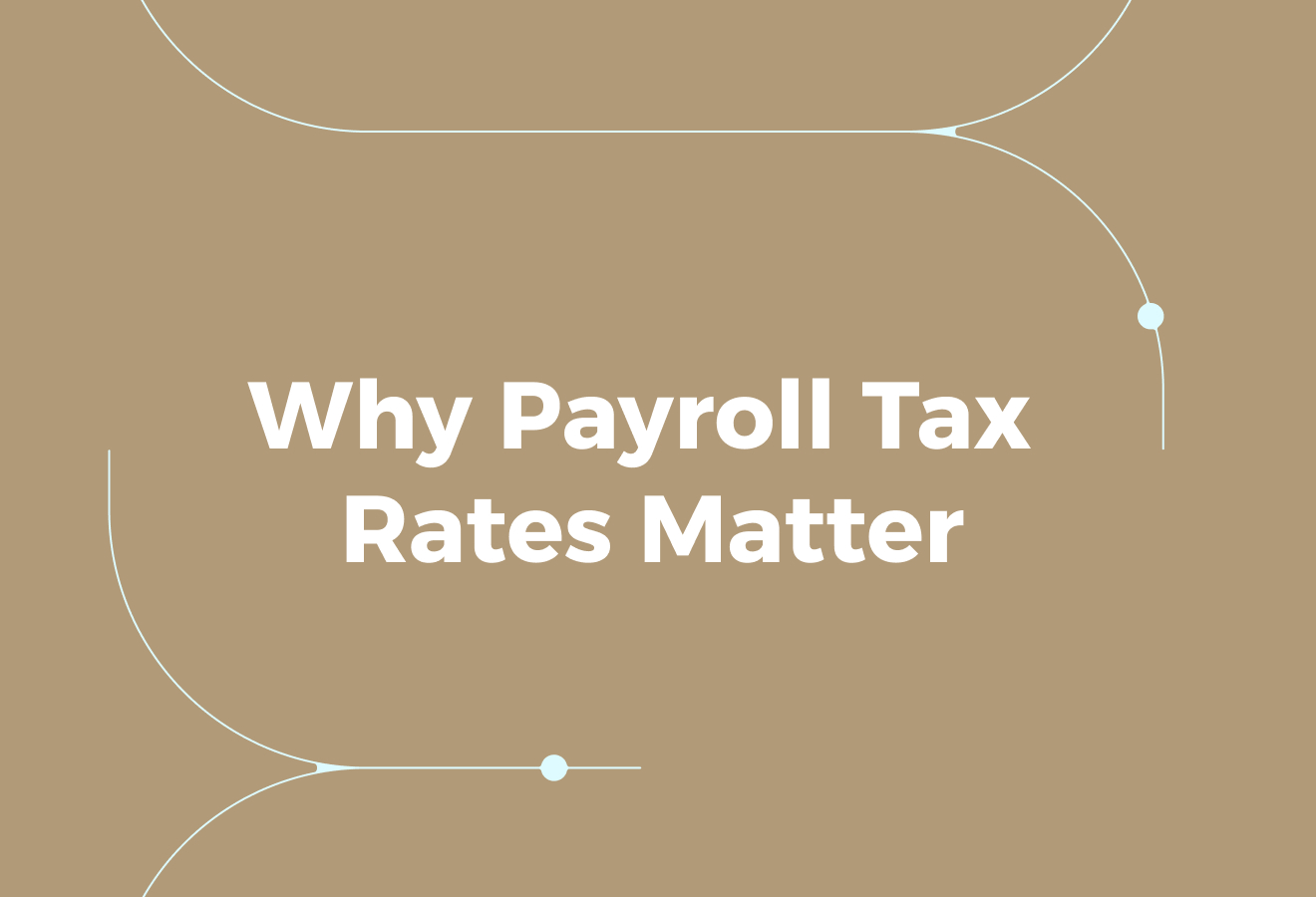What Is the Payroll Tax Rate? A Simple Guide for Employers

What Is the Payroll Tax Rate? A Simple Guide for Employers
Payroll tax rates determine the amount to be deducted from employees' pay and the amount that employers must contribute. In the United States, payroll taxes include FICA (Social Security and Medicare) and federal and state unemployment taxes. Have you ever closed the month-end only to discover an unexpected tax bill caused by miscalculated deductions or missed employer contributions? This article explains what the payroll tax rate is and how payroll tax calculations work. It also outlines what employers should do to manage withholding, payroll deductions, and compliance, ensuring that payroll taxes are accurate and predictable. Modern tools and the automation of payroll can further simplify this process, reducing errors and keeping both employers and employees compliant with tax obligations.
To help with that, Cercli's global HR system utilises payroll automation to calculate deductions, track employer tax obligations, and ensure payroll compliance across multiple countries. This can reduce the time required and lower the risk of costly errors. Cercli supports payroll and tax compliance for businesses operating in the UAE, including Dubai.
What are Payroll Tax Rates?

A payroll tax rate is the percentage of an employee’s wages that must be paid as payroll tax, either by:
- The employer
- The employee
- Both
Employers withhold the employee's share each:
- Pay period
- Add any employer contribution
- Remit the total to the relevant tax authority
This rate applies to taxable wages and determines an employer’s payroll tax liability and the payroll deduction on each payslip.
What are Payroll Tax Rates and How Do They Work?
Payroll tax rates are usually split into employer contributions and employee contributions.
Employer contributions fund items such as:
- Social security contributions
- Unemployment benefits
- Some pension schemes
Employee contributions are deducted from gross pay and typically:
- Fund pension schemes
- Healthcare
- Other social programmes
Some payroll taxes are flat-rate up to an earnings cap, while others use different thresholds for calculation and reporting. How these elements are allocated affects payroll compliance and the total cost of employment.
Who Pays Payroll Tax and Who Remits It?
Employers generally have the legal duty to withhold:
- The employee share
- Add the employer share
- Prepare payroll reports
- Remit both amounts to the tax authority
Self-employed people calculate and pay their own payroll-related taxes through:
- Self-assessment
- Reporting taxable income
- Submitting payments directly
The obligations that apply to you depend on your employment status and local payroll rules, so who completes the remittance and filing can vary.
Payroll Tax Versus Income Tax: Key Distinctions
Payroll tax funds specific social programs, such as pensions, unemployment benefits, and healthcare, whereas income tax contributes to general government revenue and supports a wide range of public services.
Payroll tax is fixed or flat up to a cap and is collected as withholding each pay period. In contrast, income tax is often progressive, with higher marginal rates for larger incomes, and may be collected via PAYE or self-assessment. The tax that affects your net pay more depends on the mix of payroll deductions, tax bands, and any applicable allowances.
Meeting Payroll and Compliance Obligations in Dubai and Across the UAE
Cercli supports payroll and compliance requirements for businesses in the UAE, including Dubai, helping employers meet local obligations with confidence.
Related Reading
- Why Outsource Payroll Processing Services
- Employee Payroll Management
- What Is Payroll Management in HR
- How Much Does Payroll Processing Cost
What Is The Payroll Tax Rate? Global Examples

What The Payroll Tax Rate Means for Employment Costs
The payroll tax rate refers to the taxes and social contributions deducted from wages, as well as the additional charges that employers must pay.
These may include:
- Income tax withholding
- Social security or National Insurance contributions
- Employer pension or insurance contributions
- Payroll administration costs
Payroll taxes alter the gross-to-net calculation, impact take-home pay and employer costs, and necessitate routine reporting and remittances: how much will payroll taxes contribute to overall labour costs?
UAE: No General Payroll Tax, But Mandatory Wage Protection and Pension Contributions for Nationals
The UAE does not levy federal personal income tax or standard payroll tax for most employees. Private-sector employers registered with the Ministry of Human Resources and Emiratisation must use the Wage Protection System (WPS) to pay salaries electronically and record payments with MOHRE. For UAE and GCC nationals, employers contribute to a government pension fund, typically at a rate of 12.5% in most emirates and 15% in Abu Dhabi.
Expatriate employees do not pay social security contributions, but employers must still ensure accurate payroll and timely WPS filing with MOHRE to avoid penalties.
United States: Social Security, Medicare and Unemployment Taxes
Federal payroll tax in the United States covers:
- Social Security under FICA totals 12.4% of wages, split equally between employer and employee at 6.2% each, applied to wages up to USD $176,100 in 2025 (maximum employee contribution USD $10,918.20).
- Medicare costs 2.9% in total, with 1.45% for each part, plus an additional 0.9% Medicare tax on employee earnings exceeding USD $200,000 that the employer does not match.
- The Federal Unemployment Tax (FUTA) is 6.0% on the first $7,000 of wages, typically reduced to 0.6% after applying state credits. The FICA wage base for Social Security is USD $176,100 for 2025.
United Kingdom: Paye, National Insurance Contributions, and Minimum Wage
UK payroll centres on PAYE for income tax withholding and National Insurance contributions (NICs), paid by both employees and employers according to earnings thresholds. Employers calculate and report PAYE and NICs each payroll cycle and must apply the correct employer NIC rates and employee deductions.
From 1 April 2025, the National Minimum Wage for those aged 21 and over is £12.21 per hour. This affects baseline pay and related payroll taxes.
China: Progressive Income Tax and Regional Social Insurance
China employs a progressive Individual Income Tax system with marginal rates ranging from 3% to 45%, depending on taxable income. Alongside IIT, mandatory social insurance covers employer and employee contributions for pension, medical insurance, unemployment benefits, and the housing fund.
Contribution rates and bases vary by city and province, so the employer share differs across municipal jurisdictions and requires local tables when calculating payroll.
How to Compare Payroll Tax Rates Internationally and Assess Employer Costs
Compare jurisdictions by total employer cost, which includes:
- Employer social contributions
- Payroll taxes
- Statutory benefits
- Minimum wage requirements
- Administrative overhead for:
- Withholding
- Reporting
Look at caps and thresholds that limit contributions, the split between employer and employee liabilities, and compliance obligations such as:
- WPS in the UAE
- Reporting frequency
- Penalties for late payment
Consider payroll currency, exchange controls and whether you need Employer of Record (EOR) services, contractor payments or multi-country payroll to pay teams across borders: which of these variables will have the most significant effect on your payroll process?
https://u.ae/en/information-and-services/jobs/employment-in-the-private-sector/payment-of-wages
https://www.investopedia.com/terms/p/payrolltax.asp
Supporting Payroll and HR Operations Across the UAE, Saudi Arabia, and the Wider MENA Region
Cercli is designed for companies in the Middle East that need a flexible, compliant, and reliable way to manage their workforce, whether teams are local, remote, or spread across multiple countries.
Built for the realities of operating in the region, Cercli supports businesses in the UAE, Saudi Arabia, and the wider MENA region in simplifying HR processes and managing payroll effectively. It provides tools to handle WPS registrations in the UAE, process GOSI in Saudi Arabia, manage DEWS contributions, and pay contractors or full-time employees in over 150 countries through multicurrency payroll and Employer of Record (EOR) services.
Related Reading
- How Does Payroll Processing Work
- AI in Payroll Processing
- Benefits of Payroll Outsourcing
- Payroll Automation Benefits
- Payroll Tax vs Income Tax
Why Payroll Tax Rates Matter for Employers: Direct Effects on Cost and Compliance

Payroll tax rates determine the amount an employer pays in addition to the gross salary. These rates shape labour costs, cash flow and hiring decisions. Employers who overlook contributions such as:
- Social security
- National Insurance contributions
- Pension contributions
- Other payroll taxes risk
It underestimates the full cost per hire. Have you modelled the total employer burden for each position you plan to fill?
How Payroll Tax Rates Shape Total Cost per Employee: Computing the Effective Payroll Tax Rate
Salary is only one line in a budget. Employer payroll tax rates and contributions increase total wages through pension payments, social security, and any statutory payroll taxes set by the jurisdiction. For example, in the UAE, employers hiring nationals must budget for a 12.5% pension contribution, or 15% in Abu Dhabi, in addition to the agreed-upon salary.
These clear contribution rules help employers plan accurately. To forecast hiring costs, you need payroll tax calculations, gross-to-net calculations, and a clear view of payroll deductions and employer-funded benefits. What is your effective payroll tax rate once all contributions and benefits are included?
Payroll Tax Rates and Compliance: What You Must File and When
Payroll tax rates are closely tied to reporting obligations.
Employers must calculate payroll withholding, deduct the correct amounts from:
- Employee pay
- Remit funds to tax authorities
- Submit payroll tax reports on schedule
Errors in payroll tax calculations or late submissions create audit risks and additional administrative work. Payroll tax software can reduce manual errors and support PAYE processes, liability tracking, and statutory filings without requiring additional staff.
Which payroll processes are automated in your business to reduce reporting risk?
The Risks of Underpayment or Late Payment: Penalties and Impact on Employees
In many jurisdictions, underpaying payroll taxes or missing deadlines leads to:
- Fines
- Interest
- Escalating penalties
Employees may also be affected if social security or pension contributions are not recorded correctly, which can reduce future benefits and undermine trust.
Correcting missed payments requires significant time and legal resources, and can expose the organisation to inspections and reputational damage. How would you respond if a payroll tax audit discovered consistent underpayments?
Ensuring Compliance with Payroll Software

Payroll software helps businesses meet their tax and reporting obligations.
Automated Calculations and Filing
Based on the latest rates, payroll software can automatically:
- Calculate salaries
- Tax deductions
- Pension contributions
- Other statutory deductions
This reduces the need for manual data entry and spreadsheets, ensuring accuracy and efficiency. Payroll software also generates the required reports for tax authorities and social security bodies. This enables businesses to submit information on time and in the correct format, reducing the risk of rejected filings or compliance issues.
Lower Risk of Human Error
Manual payroll processes are prone to mistakes such as:
- Missed deductions
- Incorrect contribution rates
- Late submissions
Payroll software reduces these errors by standardising calculations and applying the correct rates consistently for every pay run.
Timely Payments
Payroll software can schedule payments to employees and authorities, ensuring deadlines are met. This helps businesses avoid late payment penalties and ensures employees’ benefits, such as pensions or insurance, are adequately funded.
Related Reading
- Payroll Management Software Features
- How Is Payroll Tax Calculated
- Employee Payroll Automation Software
- Best Payroll Software for Small Businesses
- How to Do Payroll for a Small Business
Book a Demonstration to Learn More about Cercli’s Global HR System

The payroll tax rate refers to the share of an employee’s salary allocated to taxes and mandatory contributions, along with the employer's share, which increases payroll costs.
It is divided into two parts:
- The amount withheld from gross pay
- The employer payroll taxes are paid in addition
Standard terms include:
- Payroll tax percentage
- Employer payroll taxes
- Employee tax withholding
- Taxable wages and payroll tax liability
Factors affecting the rate include:
- Taxable wage definitions
- Social or national insurance rules
- Income tax withholding
- Payroll tax deductions
- Employer contributions for benefits
Breaking Down Payroll Tax Components for Employers and Employees
Employee tax withholding covers income tax or Pay As You Earn (PAYE) obligations, where applicable. Employer payroll taxes include social insurance contributions and other statutory charges.
Employers must also manage payroll reporting and filing duties, contributions for health or unemployment insurance, and determine payroll tax frequency, such as monthly or quarterly filings.
Payroll tax responsibilities, therefore, include:
- Calculation
- Withholding rates
- Remittance schedules
How to Calculate a Payroll Tax Rate
Start with gross wages for the pay period. Apply statutory withholding rates to calculate employee deductions. Add employer contributions for social insurance and other charges to reach the total payroll tax cost. Divide total payroll taxes by taxable wages to express the payroll tax rate as a percentage.
For example, if wages equal 100,000 and total taxes paid by the employer and withheld equal 18,000, the payroll tax rate is 18%. Accurate records of taxable wages and payroll tax reporting are essential to avoid unexpected adjustments.
Payroll Tax Compliance Across the UAE, Saudi Arabia and the Wider MENA Region
Rules vary across markets and by the nationality of employees. The UAE does not impose federal personal income tax on most employees. Employers of UAE and GCC nationals contribute to government pension funds, typically at a rate of 12.5 percent in most emirates and 15 percent in Abu Dhabi.
Businesses may also be subject to corporate tax and VAT obligations.
Payroll Tax Obligations Across Gulf and MENA Markets
Other Gulf markets apply social insurance for nationals and require specific filings from employers. Across the MENA region, several countries require withholding on payments to non-residents or contractors, while others apply payroll taxes or national insurance contributions.
Classification, residency, and statutory contributions remain the primary drivers of payroll tax obligations.
Global Contractor Payments and Withholding for Cross-Border Workers
Classifying a worker as an employee or contractor affects:
- Payroll tax withholding
- Liability
- Reporting
Paying contractors across borders introduces withholding tax risks, residency considerations, and the need to comply with double taxation agreements where applicable.
Paying in multiple currencies requires conversion for tax reporting and reconciliation with payroll filings. Automated contractor payments reduce manual errors; however, businesses must still verify local withholding requirements before making payments.
How Automation Reduces Payroll Tax Risk and Improves Efficiency
Automated payroll systems calculate:
- Withholding rates
- Track taxable wages
- Apply employer contributions
- Generate payroll tax reports on demand
Automation maintains audit trails and minimizes human error in payroll tax calculations and filings. It also updates local rules so that withholding rates and employer payroll taxes remain aligned with legislative changes. This reduces audit exposure and streamlines the month-end close process.
How Cercli Supports Compliant Payroll Across MENA and Worldwide
Cercli is designed for companies in the Middle East to manage their workforce, whether local or spread across more than 150 countries, through a single system. It enables fully compliant payroll across the UAE, Saudi Arabia, and the wider MENA region, while automating income tax withholding, employer payroll taxes, and payroll tax reporting.
Managing HR Processes and Global Payroll with Local Expertise
Cercli also manages leave, onboarding, asset tracking, and global contractor payments in multiple currencies. Whether managing 25 employees or scaling to more than 500 across various markets, Cercli provides local expertise with global coverage, offering a compliant system to run operations and pay teams internationally.
You can book a demonstration to see how Cercli helps MENA companies automate payroll tax calculations, manage HR processes, and remain compliant.
Key Questions to Ask Your Payroll Provider
- Do they calculate both employee tax withholding and employer contributions automatically?
- Can they handle local social insurance programmes and remittance schedules for each country of operation?
- Will they support multi-currency contractor payments and produce payroll tax reports for audits?
- How do they keep withholding rates and payroll tax filing rules current as laws change?










